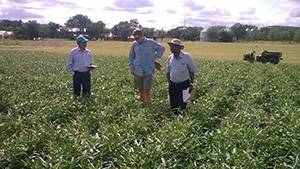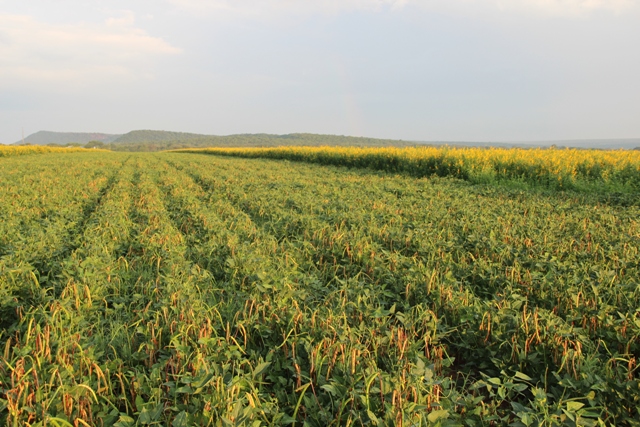More Information: Agronomy Feeds the World

Next Generation Science Standards (NGSS) Performance Expectations
The performance expectations for the Agronomy Feeds the World module are:
- 5-LS1-1
- MS-LS2-1
- MS-LS2-3
- MS-LS1-4
- MS-LS1-5
- MS-LS1-6
- HS-LS1-4
- HS-LS1-5
A 4-week investigation for middle and high school students.
One in nine people in the world are hungry, and as the population expands to 9 billion by 2050, food production must rapidly rise to the challenge to reduce hunger. Although food is a basic need for mankind, fewer citizens today are aware of the process of food production and its complexities than they were 30 years ago. Most students may not recognize the term ‘agronomy.’ Agronomy is a foundation of society because plant production is the basis for all food and feed for animals, in addition to fiber for textiles, fuel for industry, and medicines. Agronomy is multidisciplinary and from the field to the table food production is impacted by the type of farm, transportation, health, economics, policy, and environment. A key science aspect of agronomy is the intersection with the environment and management decisions that farmers make to safely and efficiently produce food for the world. Understanding that agronomy is a biological system and appreciating the intricacies inherent to food production are foundational to understanding that crop production is impacted by ecoregions and management decisions. Critical thinking is fundamental to applying knowledge of biology, plant and soil sciences, and agronomy to practical decision making about food production.
Objectives:
- Understand what an ecoregion is and how crop production is impacted by ecoregions.
- Understand the roles of soils and nutrients and how they affect plant growth.
- Understand how plant stresses affect plant growth and management decisions.
- Understand the various decisions that have to be made from field to table.
- Understand management practices used in particular ecoregions.
- Demonstrate critical thinking by applying knowledge acquired to a practical real-world situation.
How Agronomy Feeds the World Works: The core of Agronomy Feeds the World consists of student teams asking a research question developed from a real-world problem and completing an experiment to answer it. The module contains two short guided inquiries to introduce the concepts of soil nutrient retention and soil water retention, and then encourages a round of open inquiry as students come up with evidence-based proposals for solving a real-world problem set by the teacher and/or a local agronomist. However, this design is flexible depending on student abilities, performance expectations, curriculum requirements, or time constraints. The module can be preceded by or extended with another inquiry, such as the Corn Competition or Wonder of Seeds, or continued after the experiment by implementing a proposed solution to a problem (e.g. creating a school garden, carrying out a larger-scale experiment).
We recommend pairing this module with the Agronomy: Grow with It! textbook from American Society of Agronomy.

Get Started:
- Teacher's Guide
- Mentor's Guide
- Supplemental Materials for Teachers
- Experimental Design for Guided Inquiry
- Measuring Plant Growth
Key Concepts Covered in this Module:
- Field to Table – From where does food come and how does it get there?
- Plant Nutrition and Soil Fertility – How do plants get nutrients to grow?
- Geography and Water – How do these aspects affect growth of the same crops?
- Plant Stresses – What are potential issues with growing food?
Agronomy Challenges Discussed in this Module:
- Growing plants in space or on Mars - Additional Resources:
-
Growing plants in or near frack wastewater - Additional Resources: